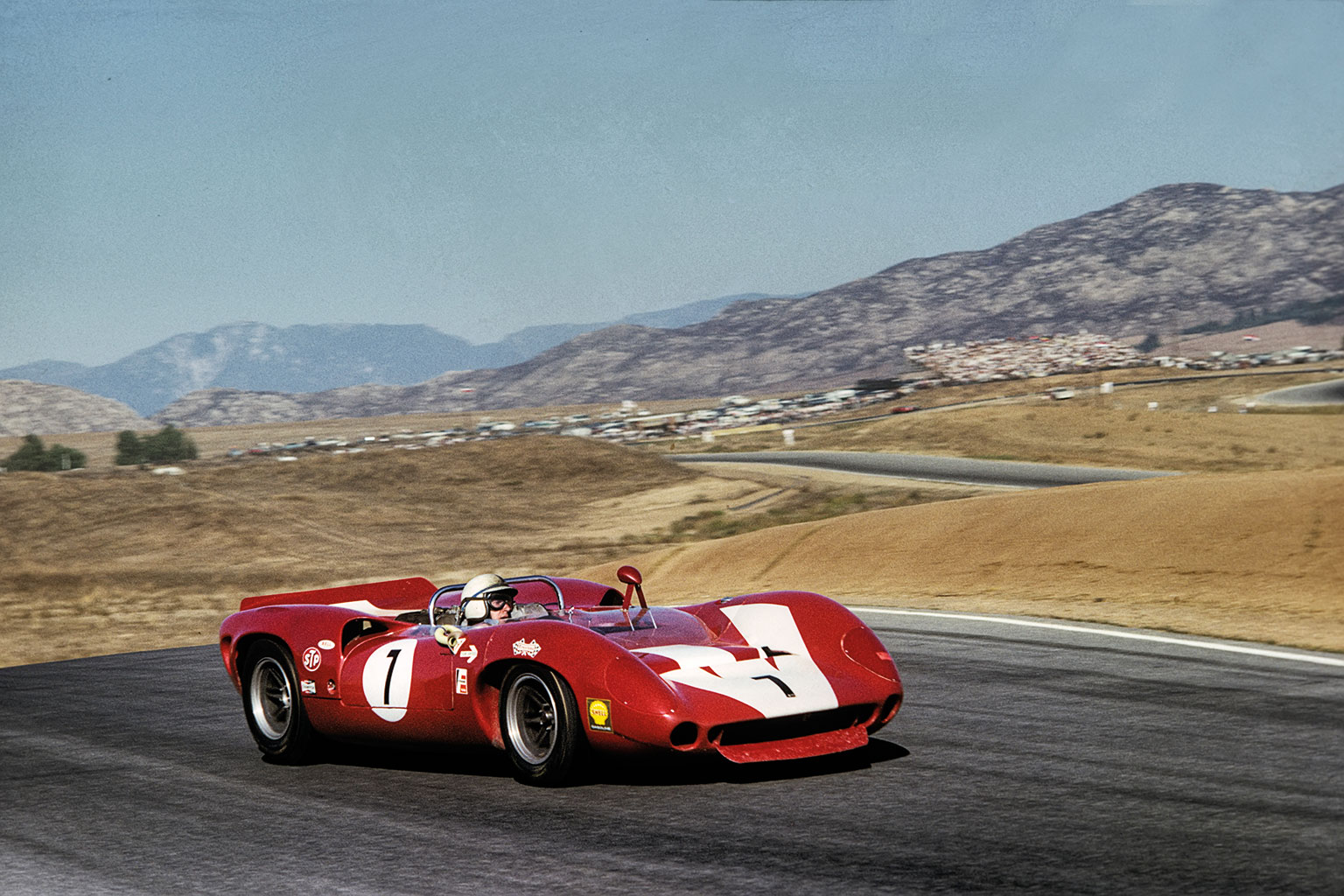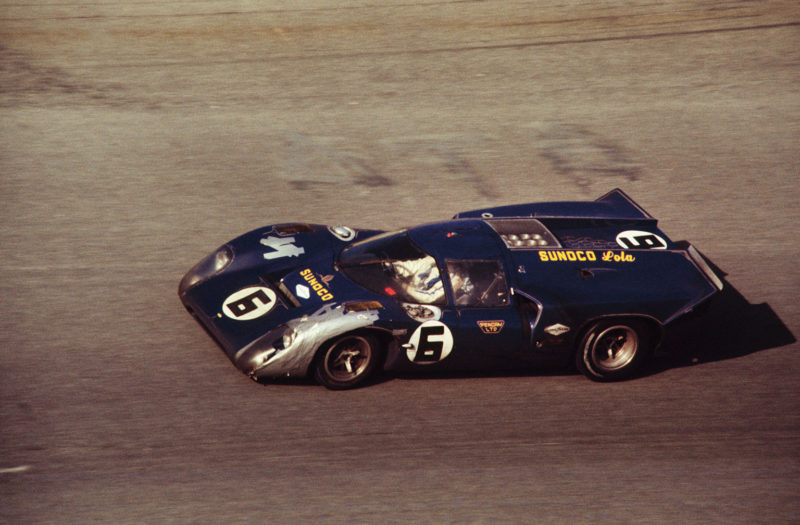Lola — The T70 & Can-Am Cars book review
Lola was a minnow of the international scene until the T70 and its thundering V8 arrived, says Gordon Cruickshank

One of the first plastic kits I remember building as a lad was John Surtees’ Can-Am Lola T70 spyder. Even then I loved the shape though I had yet to see the beautiful coupé. (I’m ashamed to say that later when psychedelia was rife I painted the model in lurid swirls of fluorescent colour…) That Surtees car and the mark it made in Can-Am – Surtees won three out of six races in 1966, becoming the inaugural series champion – boosted the Huntingdon maker to international fame in a new and popular arena of big-engined sports car racing in the USA and Europe, and Gordon Jones presents the whole of that bellowing story in this hefty hardback, which is getting on for 600 pages.
To get the housekeeping done first – as you would expect, Jones has assembled a list of every T70 built, coupé or roadster, along with complete details of every Lola race from 1963 to 1974 in all the sports car series in the USA, Europe and South Africa – over 1000 events. So it’s thumpingly comprehensive. But those are the sections you look up to track an individual car or a race result; they’re not the sections you read. Those bits are much more rewarding.
For example, in the introduction we find that one reason there’s been 30 years since this book was started is that a parcel of Jones’s research to his Swedish collaborator Anders Hedborg went missing – for 24 years. Only when, amazingly, that turned up again did the book get under way once more. Lola was never a huge firm, but as Jones says while taking us through the early years, what a huge amount of talent was nurtured by Eric Broadley – over time Tony Southgate, John Barnard and Patrick Head all sharpened their skills there. Not, of course, forgetting Broadley’s own innate talents, demonstrated on track in the late 1950s and early ’60s with successful sports cars and competitive F1 chassis.
“The V8-engined Lola Mark VI hit the 1963 Racing Car Show like a spotlit sign to the future”
Then two things came together: the World Sportscar Championship created a new experimental prototype category, and big American V8s began trumpeting their offerings of cheap, reliable and abundant power. Jones says “we don’t know exactly when Eric Broadley decided a lightweight GT with a powerful V8 behind the driver was the answer”, yet the Lola Mark VI hit the 1963 Racing Car Show like a spotlit sign to the future. Not the first mid-engined car, but one which had its four fat tyres firmly aimed at great things. Once the T70 gets itself together, Jones details the part Specialised Mouldings played in productionising the glassfibre that would speed up Lola assembly as results, and sales, began to arrive.

Mark Donohue and Chuck Parsons’ Penske-run T70 at Daytona in 1969. This version ran a Chevrolet V8, and won
There is a lovely photo in the SM workshop of the first T70 spyder body master being shaped, quickly followed by another spread showing a pair of red T70s at Brands Hatch with the drivers’ names writ large – J Surtees and J Stewart. Broadley had mixed the perfect recipe, and America would quickly notice, too. I don’t think there’s a single spread through the book that isn’t graced with great photos as Jones outlines the various series where the car started pulling in the laurels and the big names which ran them – John Mecom in the States, Brian Redman in the Red Rose Racing equipe, Lola loyalist Surtees and Sid Taylor.
As I type there’s an unraced Scalextric T70 IIIB coupé in Taylor’s white and green livery sitting on my windowsill simply because of the lovely shape. Such was the big car’s sales success that Jones has plenty to pack in even before the arrival of Can-Am in 1966 but he sensibly breaks up a torrent of mini race reports with diversions into Specialised Mouldings, Penske and Sunoco, team people such as Denny Hulme’s mechanic Ron Bennett, and the swirling race regulations that in 1967 almost knocked the T70 out of homologation for FIA series. That of course was the year of the ill-fated and under-funded attempt to make it an all-British machine by utilising Aston Martin V8 power. After we wrote about that in the 1980s I took an ear-burning ‘corrective’ phone call from Surtees… (Not the only one.) And though steadily dethroned by McLaren in Can-Am, the regulation changes introducing the 3-litre limit for FIA sports cars extended the by now well homologated T70’s competitive life, as well as the Ford GT40 which had followed on from the Lola Mark VI.
Among the reports there is a swathe of technical detail about the innards and the differences between models and the spyder and coupé versions, including some lovely cutaways. While the coupés had provision for a spare wheel vertically or horizontally between the exhaust pipes for those races that required one, the spyders didn’t – except as one picture amusingly demonstrates, at Surfers Paradise where Don O’Sullivan has his spare on a rear outrigger like a bike rack. Despite the title, this exhaustive book goes on to cover the T70’s successors in Can-Am – T163, the 8.1-litre T260 equipped with Jackie Stewart which came nearest to toppling McLaren’s grip on the Can-Am title, up to the T310, the final dedicated design for the ‘no holds barred’ cross-border competition. They may have been steadily quicker, but they’re never going to displace the earlier car in people’s affections.

Lola – The T70 & Can-Am Cars
Gordon Jones
Evro Publishing, £95
ISBN 9781910505533
